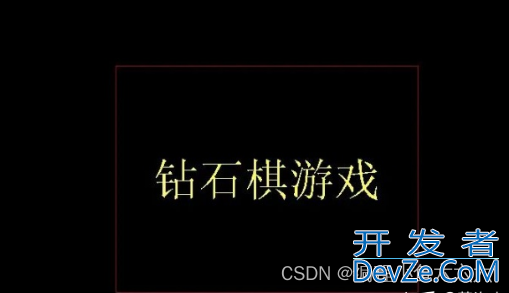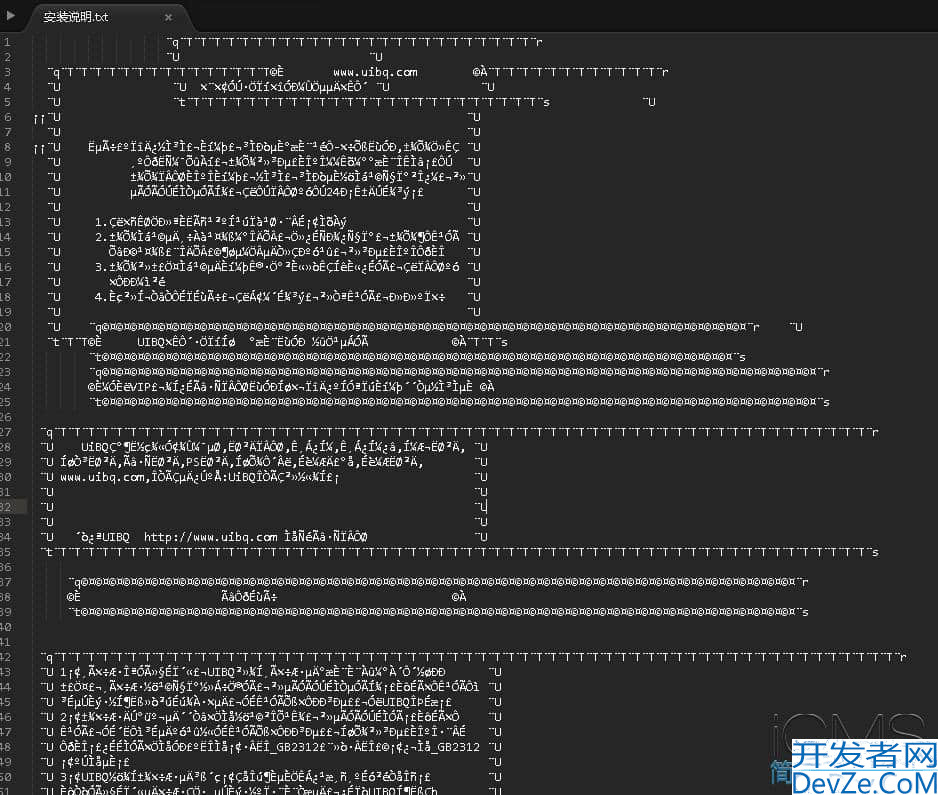Apache POI导出Excel遇NoClassDefFoundError的原因分析与解决方案
目录
- 引言
- 问题现象与错误分析
- 错误详情
- 错误类型解析
- 根本原因深度剖析
- 1. 依赖不完整或版本冲突
- 2. 类初始化失败
- 3. 环境配置问题
- 完整解决方案
- 方案一:完善依赖配置
- 方案二:依赖冲突排查
- 方案三:完整的SXSSFWorkbook使用示例
- 方案四:环境配置优化
- 高级技巧与最佳实践
- 1. 大数据量导出优化
- 2. 异常处理与日志记录
- 测试与验证
- 总结
引言
在日常的Java开发中,我们经常需要实现数据导出到Excel的功能。Apache POI作为最流行的Java操作Microsoft Office格式文件的开源库,被广泛应用于各种业务场景。然而,在使用过程中,开发者可能会遇到各种棘手的异常,其中NoClassDefFoundError: Could not initialize class org.apache.poi.xssf.streaming.SXSSFWorkbook就是一个典型的代表。
本文将从问题现象出发,深入分析该错误产生的原因,并提供完整的解决方案和最佳实践,帮助开发者彻底解决这一技术难题。
问题现象与错误分析
错误详情
当尝试使用Apache POI导出Excel文件时,系统抛出以下异常:
{
"msg": "Handler dispatch failed; nested exception is java.lang.NoClassDefFoundError: Could not initialize class org.apache.poi.xssf.streaming.SXSSFWorkbook", "code": 500}
错误类型解析
NoClassDefFoundError与ClassNotFoundException虽然都涉及类加载问题,但有着本质区别:
- ClassNotFoundException:发生在编译时类路径中存在,但运行时缺少相关JAR包的情况
- NoClassDefFoundError:发生在编译时类存在,但运行时初始化失败的情况
具体到我们的错误信息,Could not initialize class表明JVM找到了SXSSFWorkbook类,但在初始化过程中失败了。
根本原因深度剖析
1. 依赖不完整或版本冲突
这是最常见的原因。Apache POI由多个模块组成,而SXSSFWorkbook位于poi-ooXML模块中,需要多个相关依赖协同工作。
POI模块架构解析:
Apache POI项目结构:
- poi:核心模块,处理.xls格式
- poi-ooxml:处理.xlsx格式
- poi-scratchpad:处理较少见的文档格式
- poi-examples:示例代码
- poi-excelant:Excel公式计算
2. 类初始化失败
SXSSFWorkbook在静态初始化过程中可能因以下原因失败:
- 缺少必要的配置文件
- 静态代码块中抛出异常
- 依赖的Native库加载失败
- 安全权限限制
3. 环境配置问题
- 临时目录权限不足
- 磁盘空间耗尽
- 内存配置不合理
- 服务器安全策略限制
完整解决方案
方案一:完善依赖配置
Maven项目配置
<properties>
<poi.version>5.2.3</poi.version>
</properties>
<dependencies>
<!-- POI核心模块 -->
<dependency>
<groupId>org.apache.poi</groupId>
<artifactId>poi</artifactId>
<version>${poi.version}</version>
</dependency>
<!-- POI OOXML支持 (.xlsx格式) -->
<dependency>
<groupId>org.apache.poi</groupId>
<artifactId>poi-ooxml</artifactId>
<version>${poi.version}</version>
</dependency>
<!-- XML Beans支持 -->
<dependency>
<groupId>org.apache.xmlbeans</groupId>
<artifactId>xmlbeans</artifactId>
<version>5.1.1</version>
</dependency>
<!-- Commons Compress压缩支持 -->
<dependency>
<groupId>org.apache.commons</groupId>
<artifactId>commons-compress</artifactId>
<version>1.21</version>
</dependency>
<!-- Curvesapi用于图表支持 -->
<dependency>
<groupId>com.github.virtuald</groupId>
<artifactId>curvesapi</artifactId>
<version>1.07</version>
</dependency>
</dependencies>
Gradle项目配置
dependencies {
implementation 'org.apache.poi:poi:5.2.3'
implementation 'org.apache.poi:poi-ooxml:5.2.3'
implementation 'org.apache.xmlbeans:xmlbeans:5.1.1'
implementation 'org.apache.commons:commons-compress:1.21'
implementation 'com.github.virtuald:curvesapi:1.07'
}
方案二:依赖冲突排查
使用以下命令检查依赖树:
Maven项目:
mvn dependency:tree -Dincludes=org.apache.poi
Gradle项目:
gradle dependencies | grep poi
如果发现版本冲突,可以使用排除依赖:
<dependency>
编程<groupId>com.example</groupId>
<artifactId>some-library</artifactId>
<version>1.0.0</version>
<exclusions>
<exclusion>
<groupId>org.apache.poi</groupId>
<artifactId>poi</artifactId>
</exclusion>
<exclusion>
<groupId>org.apache.poi</groupId>
<artifactId>poi-ooxml</artifactId>
</exclusion>
</exclusions>
</dependency>
方案三:完整的SXSSFWorkbook使用示例
@Service
public class ExcelExportService {
private static final Logger logger = LoggerFactory.getLogger(ExcelExportService.class);
/**
* 导出数据到Excel
*/
public void exportToExcel(HttpServletResponse response,
List<DataDTO> dataList,
String fileName) {
SXSSFWorkbook workbook = null;
try {
// 设置响应头
setupResponse(response, fileName);
// 初始化SXSSFWorkbook
workbook = createWorkbook();
// 创建工作表
SXSSFSheet sheet = workbook.createSheet("数据导出");
// 创建表头
createHeaderRow(sheet);
// 填充数据
fillData(sheet, dataList);
// 自动调整列宽
autoSizeColumns(sheet);
// 写入响应流
workbook.write(response.getOutputStream());
logger.info("Excel导出成功,文件名:{}", fileName);
} catch (Exception e) {
logger.error("Excel导出失败", e);
throw new BusinessException("导出Excel文件失败");
} finally {
// 清理资源
cleanupWorkbook(workbook);
}
}
/**
* 创建SXSSFWorkbook实例
*/
private SXSSFWorkbook createWorkbook() {
try {
// 设置临时文件目录
File tempDir = new File(System.getProperty("java.io.tmpdir"), "poi-temp");
if (!tempDir.exists()) {
tempDir.mkdirs();
}
// 创建SXSSFWorkbook,设置每100行在内存中,超过的写入磁盘
SXSSFWorkbook workbook = new SXSSFWorkbook(100);
// 启用临时文件压缩以减少磁盘占用
workbook.setCompressTempFiles(true);
return workbook;
} catch (Exception e) {
logger.error("创建SXSSFWorkbook失败", e);
throw new RuntimeException("初始化Excel工作簿失败", e);
}
}
/**
* 设置HTTP响应
*/
private void setupResponse(HttpServletResponse response, String fileName)
throws UnsupportedEncodingException {
// 设置Content-Type
response.setContentType("application/vnd.openxmlformats-officedocument.spreadsheetml.sheet");
// 设置字符编码
response.setCharacterEncoding("UTF-8");
// 设置文件下载头
String encodedFileName = URLEncoder.encode(fileName, "UTF-8")
.replaceAll("\\+", "%20");
response.setHeader("Content-Disposition",
"attachment; filename=" + encodedFileName + ".xlsx");
// 禁用缓存
response.setHeader("Cache-Control", "no-cache, no-store, must-revalidate");
response.setHeader("Pragma", "no-cache");
response.setDateHeader("Expires", 0);
}
/**
* 创建表头行
*/
private void createHeaderRow(SXSSFSheet sheet) {
String[] headers = {"ID", "姓名", "年龄", "邮箱", "创建时间"};
Row headerRow = sheet.createRow(0);
CellStyle headerStyle = createHeaderCellStyle(sheet.getWorkbook());
for (int i = 0; i < headers.length; i++) {
Cell cell = headerRow.createCell(i);
cell.setCellValue(headers[i]);
cell.setCellStyle(headerStyle);
}
}
/**
* 创建表头样式
*/
private CellStyle createHeaderCellStyle(Workbook workbook) {
CellStyle style = workbook.createCellStyle();
// 设置背景色
style.setFillForegroundColor(IndexedColors.GREY_25_PERCENT.getIndex());
style.setFillPattern(FillPatternType.SOLID_FOREGROUND);
// 设置边框
style.setBorderBottom(BorderStyle.THIN);
style.setBorderTop(BorderStyle.THIN);
style.setBorderLeft(BorderStyle.THIN);
style.setBorderRight(BorderStyle.THIN);
// 设置字体
Font font = workbook.createFont();
font.setBold(true);
font.setFontHeightInPoints((short) 12);
style.setFont(font);
// 设置对齐方式
style.setAlignment(HorizontalAlignment.CENTER);
style.setVerticalAlignment(VerticalAlignment.CENTER);
return style;
}
/**
* 填充数据
*/
private void fillData(SXSSFSheet sheet, List<DataDTO> dataList) {
CellStyle dataStyle = createDataCellStyle(sheet.getWorkbook());
DateTimeFormatter formatter = DateTimeFormatter.ofPattern("yyyy-MM-dd HH:mm:ss");
for (int i = 0; i < dataList.size(); i++) {
DataDTO data = dataList.get(i);
Row row = sheet.createRow(i + 1); // +1 跳过表头行
// ID
Cell cell0 = row.createCell(0);
cell0.setCellValue(data.getId());
cell0.setCellStyle(dataStyle);
// 姓名
Cell cell1 = row.createCell(1);
cell1.setCellValue(data.getName());
cell1.setCellStyle(dataStyle);
// 年龄
Cell cell2 = row.createCell(2);
cell2.setCellValue(data.getAgpythone());
cell2.setCellStyle(dataStyle);
// 邮箱
Cell cell3 = row.createCell(3);
cell3.setCellValue(data.getEmail());
cell3.setCellStyle(dataStyle);
// 创建时间
Cell cell4 = row.createCell(4);
cell4.setCellValue(data.getCreateTime().format(formatter));
cell4.setCellStyle(dataStyle);
}
}
/**
* 创建数据单元格样式
*/
private CellStyle createDataCellStyle(Workbook workbook) {
CellStyle style = workbook.createCellStyle();
// 设置边框
style.setBorderBottom(BorderStyle.THIN);
style.setBorderTop(BorderStyle.THIN);
javascript style.setBorderLeft(BorderStyle.THIN);
style.setBo编程rderRight(BorderStyle.THIN);
// 设置垂直居中
style.setVerticalAlignment(VerticalAlignment.CENTER);
return style;
}
/**
* 自动调整列宽
*/
private void autoSizeColumns(SXSSFSheet sheet) {
for (int i = 0; i < 5; i++) { // 假设有5列
sheet.autoSizeColumn(i);
// 设置最小列宽
sheet.setColumnWidth(i, Math.max(sheet.getColumnWidth(i), 3000));
}
}
/**
* 清理工作簿资源
*/
private void cleanupWorkbook(SXSSFWorkbook workbook) {
if (workbook != null) {
try {
// 清理临时文件
workbook.dispose(android);
workbook.close();
} catch (IOException e) {
logger.warn("清理工作簿资源时发生异常", e);
}
}
}
}
方案四:环境配置优化
服务器配置检查
@Component
public class EnvironmentChecker {
public void checkPoiEnvironment() {
// 检查临时目录
checkTempDirectory();
// 检查磁盘空间
checkDiskSpace();
// 检查内存设置
checkMemorySettings();
}
private void checkTempDirectory() {
String tempDirPath = System.getProperty("java.io.tmpdir");
File tempDir = new File(tempDirPath);
if (!tempDir.exists() || !tempDir.canWrite()) {
throw new RuntimeException("临时目录不可用: " + tempDirPath);
}
// 创建POI专用临时目录
File poiTempDir = new File(tempDir, "poi-temp");
if (!poiTempDir.exists()) {
poiTempDir.mkdirs();
}
logger.info("POI临时目录: {}", poiTempDir.getAbsolutePath());
}
private void checkDiskSpace() {
File tempDir = new File(System.getProperty("java.io.tmpdir"));
long freeSpace = tempDir.getFreeSpace();
long minRequiredSpace = 100 * 1024 * 1024; // 100MB
if (freeSpace < minRequiredSpace) {
throw new RuntimeException("磁盘空间不足,剩余: " +
(freeSpace / (1024 * 1024)) + "MB,需要至少100MB");
}
logger.info("磁盘剩余空间: {}MB", freeSpace / (1024 * 1024));
}
private void checkMemorySettings() {
Runtime runtime = Runtime.getRuntime();
long maxMemory = runtime.maxMemory();
long totalMemory = runtime.totalMemory();
long freeMemory = runtime.freeMemory();
logger.info("JVM内存信息 - 最大: {}MB, 已分配: {}MB, 剩余: {}MB",
maxMemory / (1024 * 1024),
totalMemory / (1024 * 1024),
freeMemory / (1024 * 1024));
}
}
高级技巧与最佳实践
1. 大数据量导出优化
对于海量数据导出,需要进一步优化:
public class LargeDataExcelExporter {
/**
* 大数据量分批次导出
*/
public void exportLargeData(HttpServletResponse response,
DataQuery query,
String fileName) {
SXSSFWorkbook workbook = new SXSSFWorkbook(100); // 减少内存中行数
try {
setupResponse(response, fileName);
SXSSFSheet sheet = workbook.createSheet("数据");
int rowNum = 0;
int BATchSize = 1000;
// 创建表头
rowNum = createHeader(sheet, rowNum);
// 分批次查询和写入
while (true) {
List<DataDTO> batchData = dataService.getBatchData(query, batchSize);
if (batchData.isEmpty()) {
break;
}
rowNum = fillBatchData(sheet, batchData, rowNum);
// 定期清理内存
if (rowNum % 10000 == 0) {
System.gc(); // 建议谨慎使用,仅在大数据量时考虑
}
query.setLastId(batchData.get(batchData.size() - 1).getId());
}
workbook.write(response.getOutputStream());
} finally {
cleanupWorkbook(workbook);
}
}
}
2. 异常处理与日志记录
@Slf4j
@ControllerAdvice
public class GlobalExceptionHandler {
/**
* 处理Excel导出异常
*/
@ExceptionHandler(NoClassDefFoundError.class)
@ResponseBody
public ResponseEntity<Result<?>> handleNoClassDefFoundError(NoClassDefFoundError e) {
log.error("类定义未找到异常", e);
// 根据异常信息判断具体原因
if (e.getMessage().contains("SXSSFWorkbook")) {
return ResponseEntity.status(HttpStatus.INTERNAL_SERVER_ERROR)
.body(Result.error("系统配置异常,请联系管理员检查POI依赖配置"));
}
return ResponseEntity.status(HttpStatus.INTERNAL_SERVER_ERROR)
.body(Result.error("系统内部错误"));
}
/**
* 处理所有导出相关异常
*/
@ExceptionHandler(Exception.class)
@ResponseBody
public ResponseEntity<Result<?>> handleExportException(Exception e) {
log.error("导出操作异常", e);
return ResponseEntity.status(HttpStatus.INTERNAL_SERVER_ERROR)
.body(Result.error("导出失败,请稍后重试"));
}
}
测试与验证
单元测试示例
@SpringBootTest
class ExcelExportServiceTest {
@Autowired
private ExcelExportService excelExportService;
@Test
void testExportWorkbookCreation() {
// 测试工作簿创建
assertDoesNotThrow(() -> {
SXSSFWorkbook workbook = excelExportService.createWorkbook();
assertNotNull(workbook);
workbook.dispose();
workbook.close();
});
}
@Test
void testDependencies() {
// 验证必要的类是否可加载
assertDoesNotThrow(() -> {
Class.forName("org.apache.poi.xssf.streaming.SXSSFWorkbook");
Class.forName("org.apache.poi.ss.usermodel.Workbook");
Class.forName("org.apache.poi.util.TempFile");
});
}
}
总结
通过本文的详细分析,我们了解到NoClassDefFoundError: Could not initialize class org.apache.poi.xssf.streaming.SXSSFWorkbook错误的复杂性和多样性。解决这个问题需要从依赖管理、环境配置、代码实现等多个角度综合考虑。
关键要点总结:
- 依赖完整性:确保所有必要的POI模块和传递依赖都正确引入
- 版本一致性:避免不同模块间的版本冲突
- 环境准备:确保服务器有足够的磁盘空间和正确的文件权限
- 资源管理:正确初始化和清理SXSSFWorkbook资源
- 异常处理:建立完善的异常处理机制,提供友好的用户提示
通过遵循本文提供的解决方案和最佳实践,开发者可以有效避免和解决SXSSFWorkbook初始化失败的问题,构建稳定可靠的Excel导出功能。
到此这篇关于Apache POI导出Excel遇NoClassDefFoundError的原因分析与解决方案的文章就介绍到这了,更多相关NoClassDefFoundError错误解决内容请搜索编程客栈(www.devze.com)以前的文章或继续浏览下面的相关文章希望大家以后多多支持编程客栈(www.devze.com)!






 加载中,请稍侯......
加载中,请稍侯......
精彩评论